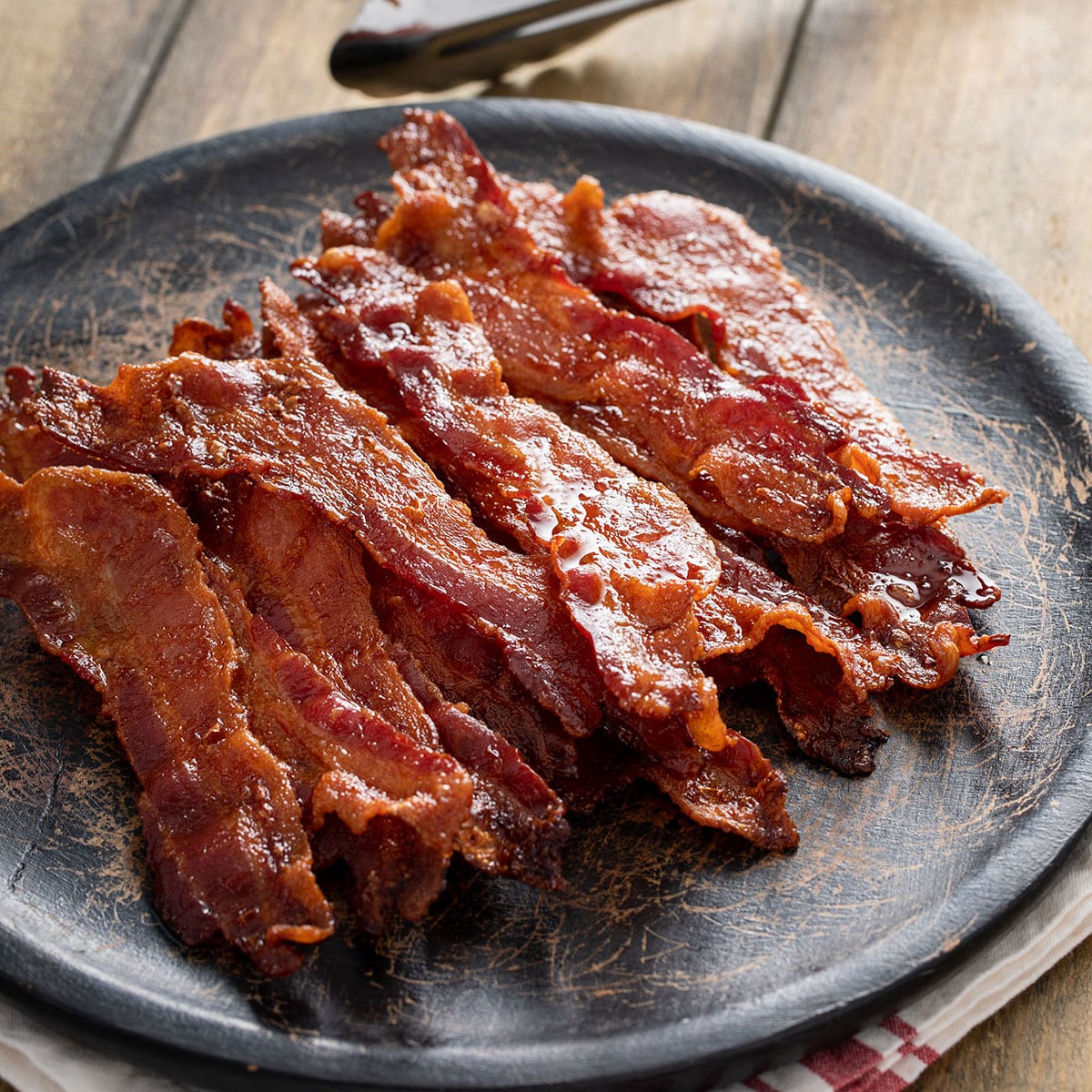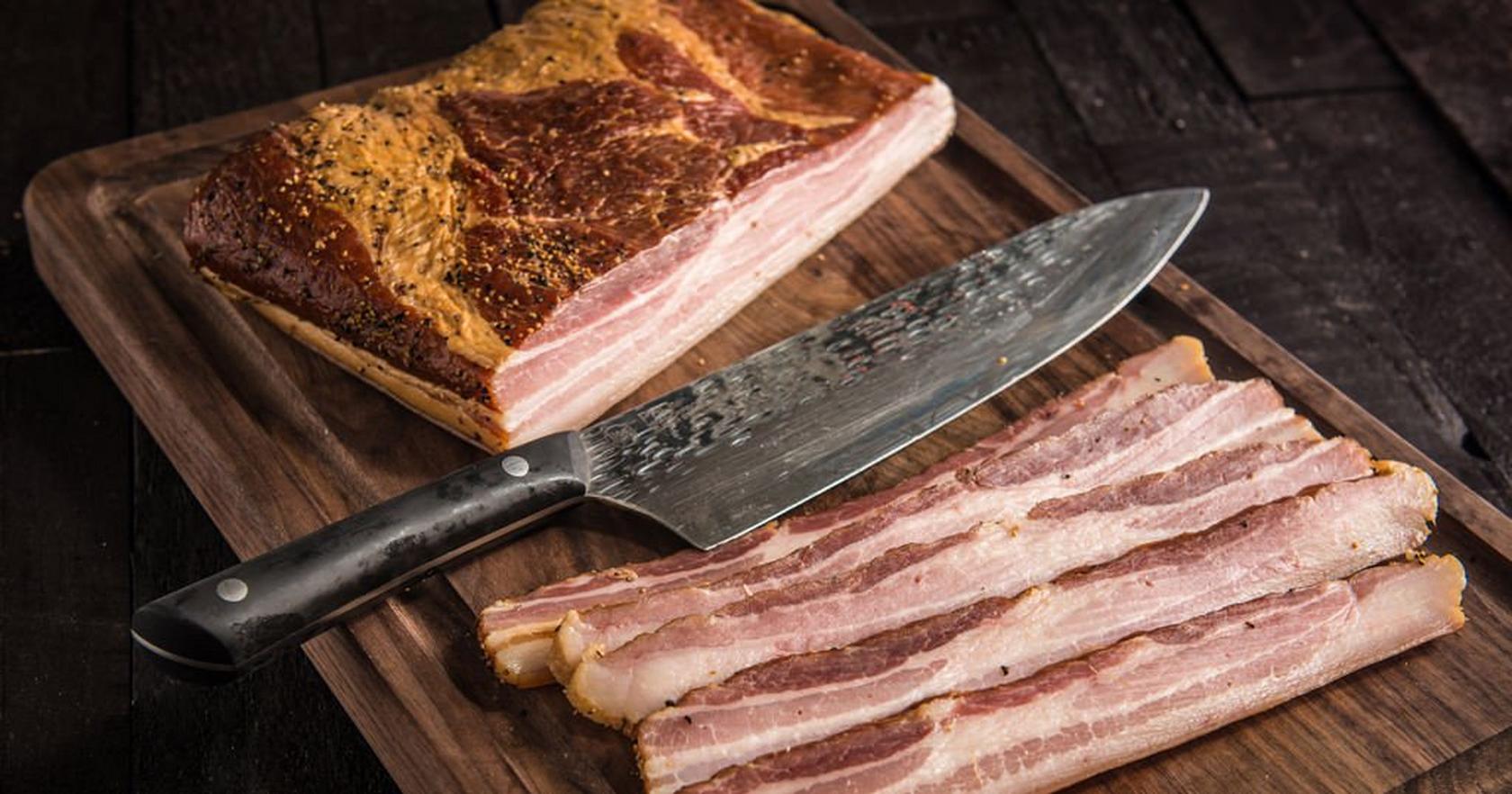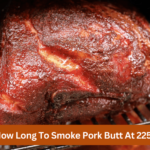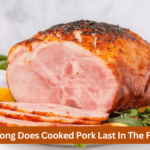Pork belly and bacon are often confused with each other due to their close relationship and common origins. While both come from the same part of the pig, they are distinct in terms of preparation, flavor, and culinary uses. This blog post will delve into the differences and similarities between pork belly and bacon, exploring their production processes, culinary applications, and health aspects. By the end, you’ll have a clear understanding of these two delicious meats.
When it comes to pork, two terms often come up in culinary discussions: pork belly and bacon. Both are beloved for their rich, fatty flavors and versatility in the kitchen, but they are not the same thing. This comprehensive guide aims to clarify the differences between pork belly and bacon, offering insights into their origins, preparation methods, and how they can be used in various recipes.
Understanding Pork Belly
:max_bytes(150000):strip_icc()/240136_crispyporkbelly_ddmf_02_2x1_JD_5460-421decafa7cb44d5b3c9cd30b88665f6.jpg)
What is Pork Belly?
Pork belly is known for its high fat content, which contributes to its rich and succulent flavor. The fat is interspersed with layers of muscle, making the meat particularly tender and juicy when cooked properly. This cut of meat is highly prized in various cuisines around the world for its ability to absorb flavors and maintain moisture during cooking.
Culinary Uses of Pork Belly
The culinary versatility of pork belly is one of its most attractive features. It can be prepared using a variety of cooking techniques, each bringing out different aspects of its flavor and texture. Here are some common methods:
- Braising: Slow-cooking pork belly in a liquid, such as broth, wine, or a soy-based sauce, allows the fat to render out gradually, infusing the meat with rich flavors and resulting in an incredibly tender dish. Braised pork belly is popular in Asian cuisines, particularly in Chinese and Korean cooking.
- Roasting: When roasted at high temperatures, pork belly develops a crispy exterior while the inside remains moist and tender. This method is often used in Western cuisines, where pork belly is roasted with a variety of herbs and spices to create a flavorful crust.
- Grilling: Grilling pork belly can add a smoky flavor and a crispy texture. This method is commonly seen in barbecue cultures, where the meat is marinated before being grilled over an open flame.
- Frying: Thinly sliced pork belly can be fried until crispy, providing a delicious addition to salads, sandwiches, or as a standalone snack.
Popular Pork Belly Recipes
Pork belly’s rise in popularity is reflected in the wide array of recipes available. Here are a few that highlight its versatility and appeal:
- Braised Pork Belly: This recipe typically involves simmering the pork belly in a mixture of soy sauce, sugar, garlic, ginger, and spices. The slow cooking process allows the flavors to penetrate deeply into the meat, creating a dish that is both savory and slightly sweet.
- Maple Bourbon Pork Belly Burnt Ends: This recipe is inspired by barbecue traditions, where the pork belly is smoked, cut into cubes, and then glazed with a maple bourbon sauce. The cubes are cooked until they are caramelized and crispy on the outside, while remaining tender inside.
- Crispy Pork Belly: To achieve the perfect crispy skin, the pork belly is often scored and rubbed with a mixture of salt and spices before being roasted at a high temperature. The result is a dish with a crackling exterior and a juicy interior, making it a favorite in both home kitchens and restaurants.
- Korean Style Pork Belly (Samgyeopsal): In Korean cuisine, pork belly is often sliced thinly and grilled at the table. It is usually served with an array of side dishes, including kimchi, garlic, and dipping sauces, allowing diners to create their own flavorful bites.
Understanding Bacon

What is Bacon?
Bacon is a type of cured meat that is most commonly made from pork belly, though it can also be made from other cuts such as the back or loin. The curing process, which involves treating the meat with salt, nitrates, and sometimes sugar, preserves the meat and imparts a distinctive flavor. After curing, the meat is often smoked to add an additional layer of flavor. This combination of curing and smoking gives bacon its characteristic taste and texture.
Production Process of Bacon
The production of bacon involves several key steps that transform a raw pork belly into the crispy, flavorful strips many people enjoy:
- Selection of Pork Belly: High-quality pork belly is selected as the starting material. The belly is chosen for its balance of fat and muscle, which is essential for the final texture and flavor of bacon.
- Curing: The pork belly is cured by applying a mixture of salt, nitrates or nitrites, and sometimes sugar. This curing process can be done using either a dry cure, where the mixture is rubbed directly onto the meat, or a wet cure, where the meat is submerged in a brine solution. The curing process typically takes several days to a week, allowing the salt and other ingredients to penetrate the meat thoroughly.
- Smoking: After curing, the pork belly is often smoked to enhance its flavor. Different types of wood, such as hickory, applewood, or cherrywood, can be used to impart varying flavors. The smoking process not only adds a smoky taste but also helps to further preserve the meat.
- Slicing: Once the pork belly has been cured and smoked, it is sliced into thin strips, which are then packaged and sold as bacon. The thickness of the slices can vary depending on the desired use and personal preference.
Culinary Uses of Bacon
Bacon’s rich, salty flavor and crispy texture make it a popular ingredient in a wide range of dishes. It can be used as a main ingredient, a garnish, or a flavor enhancer. Some of the most common culinary uses of bacon include:
- Breakfast Dishes: Bacon is a classic component of a traditional breakfast, often served alongside eggs, toast, and pancakes. It can also be used in breakfast sandwiches and omelets.
- Salads: Crispy bacon bits are a popular addition to salads, providing a crunchy texture and savory flavor. One famous example is the BLT (Bacon, Lettuce, and Tomato) salad, which features bacon as a key ingredient.
- Soups and Chowders: Bacon adds depth and richness to soups and chowders. It is commonly used in recipes like clam chowder and potato soup, where it complements the creamy base.
- Sandwiches and Burgers: Bacon is a favorite topping for sandwiches and burgers, adding a layer of flavor and texture. The classic BLT sandwich is a prime example of bacon’s versatility.
- Appetizers and Snacks: Bacon-wrapped appetizers, such as bacon-wrapped jalapeno poppers or dates, are popular party snacks. Bacon can also be used in dips and spreads to enhance their flavor.
Popular Bacon Recipes
To truly appreciate the versatility of bacon, here are some popular recipes that highlight its unique qualities:
- Sausage Stuffed Jalapeno Poppers: Jalapenos are stuffed with sausage and wrapped in bacon, then baked until crispy and golden. The bacon adds a smoky, salty flavor that complements the spicy jalapenos and savory sausage.
- BLT Salad: This fresh salad features crispy bacon, lettuce, and tomatoes, often topped with a creamy dressing. The bacon adds a satisfying crunch and savory note to the mix.
- Chicken Chowder with Bacon: A hearty soup made with chicken, bacon, potatoes, and corn in a creamy broth. The bacon provides a smoky depth that enhances the overall flavor of the chowder.
- Bacon-Wrapped Scallops: Tender scallops are wrapped in bacon and broiled or grilled until the bacon is crispy. The combination of the succulent scallops and the crispy bacon is a delightful contrast in textures and flavors.
Bacon Varieties and Innovations
In addition to traditional pork bacon, there are several variations and innovations that cater to different dietary preferences and culinary uses:
- Turkey Bacon: Made from turkey meat, this alternative to pork bacon is lower in fat and calories. It is often used as a healthier option while still providing a similar flavor profile.
- Beef Bacon: Made from beef, this variety offers a different taste and texture but follows a similar curing and smoking process as pork bacon.
- Vegetarian and Vegan Bacon: For those who avoid meat, there are plant-based bacon alternatives made from ingredients like soy, tempeh, or coconut. These products are designed to mimic the flavor and texture of traditional bacon.
Comparing Pork Belly and Bacon

Flavor and Texture
- Pork Belly: Known for its rich, unadulterated pork flavor, pork belly offers a combination of tender meat and luscious fat. When cooked properly, pork belly has a melt-in-your-mouth texture with layers of succulent meat and crispy skin.
- Bacon: In contrast, bacon boasts a distinct salty, smoky flavor derived from the curing and smoking process. It has a crispy texture when cooked, providing a satisfying crunch that contrasts with the tender meat underneath. The fat in bacon renders out during cooking, resulting in a crispy, savory treat.
Nutritional Differences
- Pork Belly: As an unprocessed meat, pork belly is higher in fat but free from added preservatives. It contains significant amounts of protein and fat, providing energy and essential nutrients. However, its fat content may be a concern for individuals watching their dietary fat intake.
- Bacon: Due to the curing process, bacon contains additional sodium, nitrates, and nitrites, which act as preservatives and contribute to its distinct flavor. While still high in fat, bacon also contains added salt and may contain added sugars, depending on the curing process used. Excessive consumption of bacon, particularly processed bacon, has been associated with health risks such as heart disease and cancer.
Culinary Versatility
- Pork Belly: Due to its higher fat content and unprocessed nature, pork belly is well-suited for slow-cooking methods that allow the fat to render out and the meat to become tender. It is a versatile ingredient in many cuisines, particularly in Asian and gourmet dishes.
- Bacon: Bacon’s ready-to-cook form and distinctive flavor make it a popular addition to a wide range of dishes. It can be used as a main ingredient, a garnish, or a flavor enhancer in everything from breakfast dishes to salads, soups, sandwiches, and appetizers.
Comparing Cooking Methods
- Pork Belly: Common cooking methods for pork belly include braising, roasting, grilling, and frying. These methods allow the fat to slowly render out, resulting in a tender, flavorful dish with crispy skin or caramelized edges, depending on the technique used.
- Bacon: Bacon is typically cooked by frying, baking, or grilling until crispy. These methods quickly cook the thin slices of bacon, resulting in crispy strips that can be eaten on their own or used as an ingredient in various dishes.
Culinary Applications
- Pork Belly: Pork belly is often the star of the dish, showcased in recipes that highlight its rich flavor and tender texture. It is commonly used in braised dishes, roasted entrees, and gourmet preparations where its natural qualities can shine.
- Bacon: Bacon is a versatile ingredient that adds flavor and texture to a wide range of dishes. It can be used as a topping, a garnish, or a seasoning agent in recipes such as salads, sandwiches, soups, pastas, and appetizers. Its salty, smoky flavor complements both savory and sweet dishes, making it a favorite among chefs and home cooks alike.
Health Considerations

Nutritional Content
- Pork Belly: As an unprocessed meat, pork belly is rich in protein and fat. While it provides essential nutrients and energy, its high fat content, particularly saturated fat, may raise concerns for individuals looking to manage their cholesterol levels or weight.
- Bacon: Bacon, on the other hand, contains additional sodium, nitrates, and nitrites from the curing process. These additives act as preservatives and contribute to bacon’s distinct flavor and texture. While bacon also provides protein and fat, its higher salt content and potential presence of added sugars may impact cardiovascular health if consumed in excess.
Processed vs. Unprocessed
- Pork Belly: Being unprocessed, pork belly does not contain added nitrates or nitrites, which have been linked to health concerns such as increased cancer risk when consumed in large amounts. However, its high fat content may still pose health risks if consumed in excess, particularly for individuals with certain medical conditions or dietary restrictions.
- Bacon: The curing process used to make bacon involves the addition of salt, nitrates, and nitrites, which act as preservatives and enhance flavor. While these additives help prolong the shelf life of bacon and contribute to its distinct taste, they may have adverse health effects when consumed in large quantities. Processed meats like bacon have been associated with an increased risk of certain health conditions, including heart disease and cancer.
Moderation and Balance
- Pork Belly: When consumed in moderation as part of a balanced diet, pork belly can be enjoyed as a flavorful and satisfying protein source. Pairing it with plenty of fruits, vegetables, whole grains, and other nutrient-rich foods can help offset its high fat content and contribute to overall dietary balance.
- Bacon: Similarly, enjoying bacon in moderation and as part of a varied diet can help mitigate its potential health risks. Choosing lower-sodium varieties and limiting intake of processed meats can help minimize the impact on cardiovascular health and overall well-being. Additionally, balancing bacon consumption with plenty of whole foods and nutrient-dense ingredients can help maintain a balanced diet.
Dietary Considerations
- Individual Health Status: Individuals with specific health conditions, such as high cholesterol, hypertension, or heart disease, may need to monitor their intake of high-fat and processed meats like pork belly and bacon. Consulting with a healthcare provider or registered dietitian can help tailor dietary recommendations to individual health needs and goals.
- Dietary Preferences: For those following specific dietary patterns or lifestyles, such as vegetarianism or veganism, alternatives to pork belly and bacon, such as plant-based proteins or meat substitutes, can provide similar flavors and textures without the health concerns associated with animal-derived products.
- Overall Dietary Patterns: Ultimately, focusing on overall dietary patterns and lifestyle habits, rather than individual foods or ingredients, is key to promoting long-term health and well-being. Incorporating a variety of nutrient-rich foods, including lean proteins, whole grains, fruits, vegetables, and healthy fats, can help support optimal health and reduce the need for restrictive dietary measures.
Conclusion
Pork belly and bacon, while originating from the same part of the pig, offer distinct culinary experiences. Pork belly provides a rich, unprocessed meat ideal for slow cooking, while bacon offers a smoky, salty flavor that enhances many dishes. Understanding their differences allows you to appreciate each for its unique qualities and use them appropriately in your cooking.
Whether you prefer the tender, flavorful experience of pork belly or the crispy, smoky delight of bacon, both have their place in the culinary world. By exploring various recipes and cooking methods, you can enjoy the best of both meats in your kitchen.






